Here’s everything that goes into making the call on whether it’s a snow day
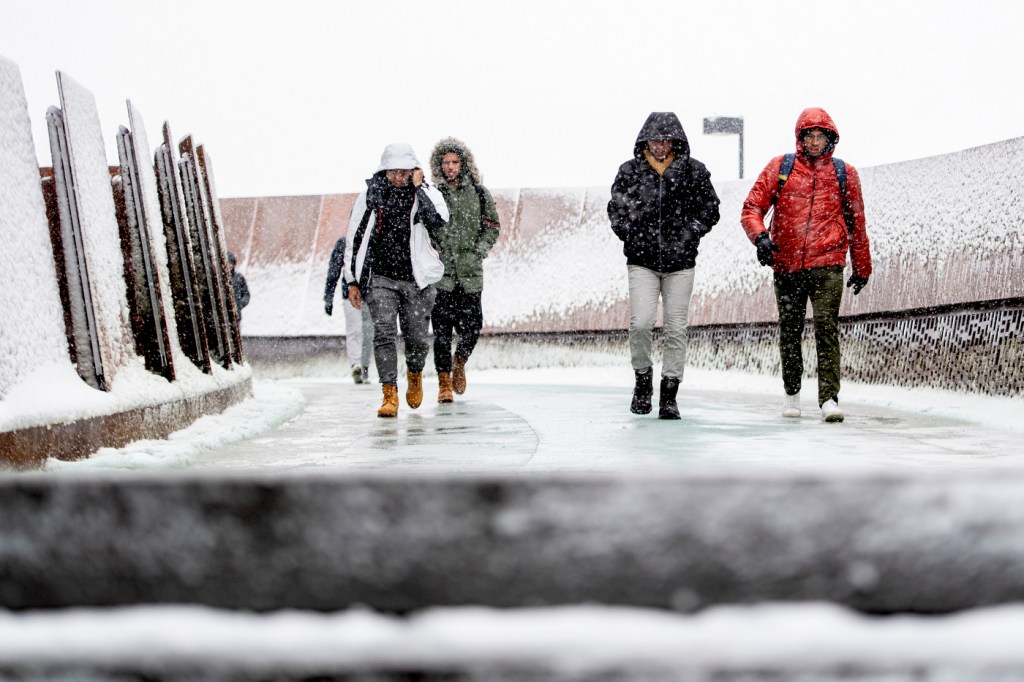
When everyone at Northeastern’s Massachusetts campuses was wondering if the university would delay or cancel Tuesday classes in anticipation of the first significant snowfall, they really were wondering what Mark Boulter was going to do.
Because that’s his job. Boulter has been informing the snow-related decisions at Northeastern for 22 years, in consultation with associate vice president of facilities Jack Malone and other university administrators.
The decision to delay classes until 9:50 a.m. was based on an understanding that many roads would be cleared by 9 a.m., as well as a desire to affect as few classes as possible in this crucial academic week that precedes final exams. Further delays would have affected more than 250 classes that begin at 9:50 a.m. Students, faculty, and staff were urged to prioritize safety.
In making the call, a senior group of Northeastern administrators balances the academic and safety challenges in consultation with Boulter and Malone. In a Monday afternoon conference-call, Boulter had told colleagues of his clean-up plans: At midnight, 100 workers would begin clearing the streets and sidewalks of the campuses in Nahant, Burlington, Dedham, and Boston, in order to make them safe for the opening of school on Tuesday morning.
“The main thing is I don’t want anybody hurt,” says Boulter, Northeastern’s director of building services, who is also involved in decisions on weather-related closings at Northeastern’s campuses in Charlotte, the Bay Area, Vancouver, Seattle, Toronto and London. “Our people work together in groups, and we wear our reflective gear because sometimes drivers can’t see you in blizzard conditions. So then we have to pull people back.”
The final decision was made after an early-morning conference call among the administrators, as well as Boulter and Malone.
“The safety of our community is our top priority,” the university said in a statement. “We recognize that commute times may be longer than normal, and we ask that staff who expect to be delayed notify their supervisors as needed.”
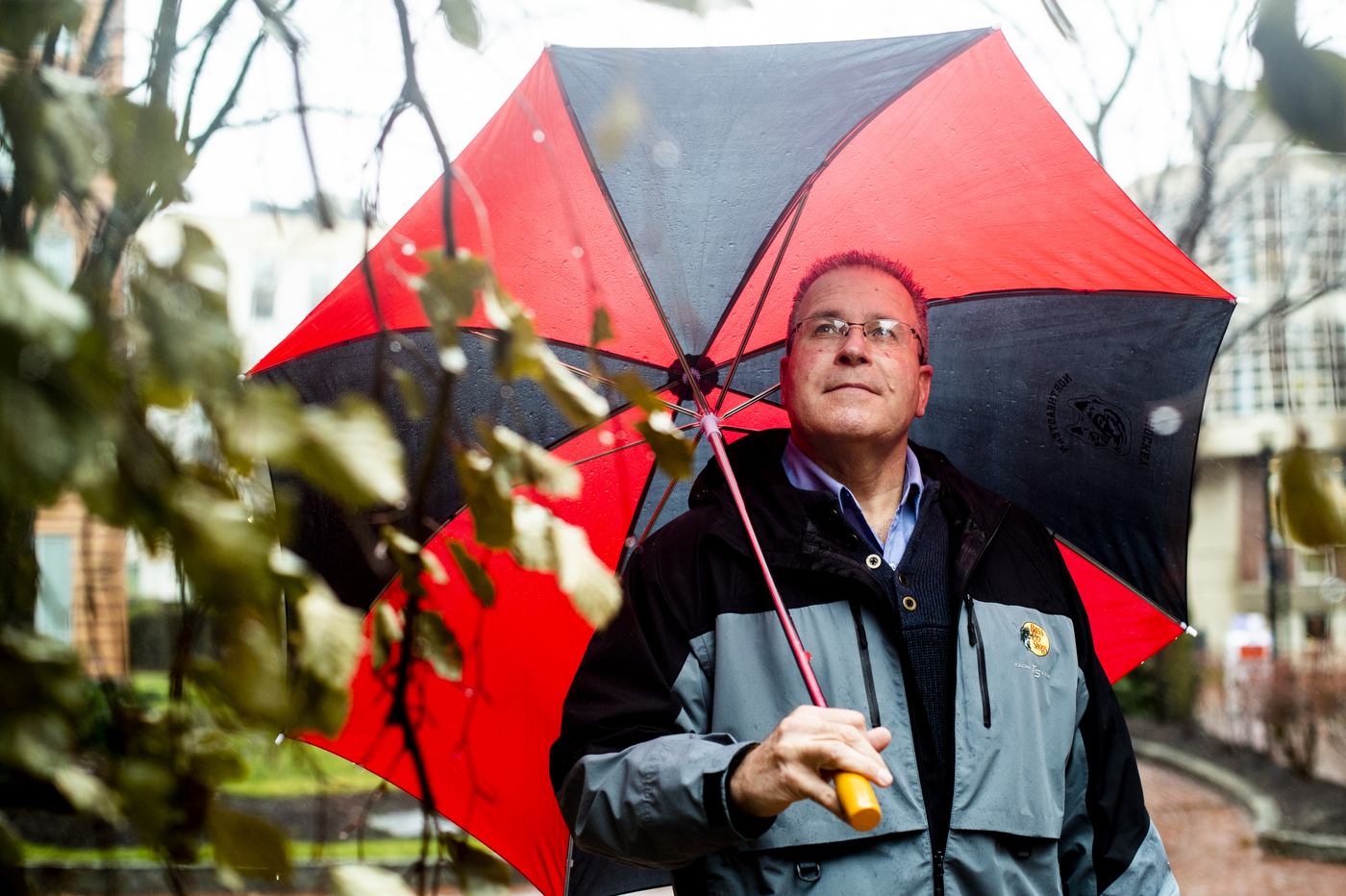
More than 17,000 students, faculty, and staff are depending on Boulter’s perspective at this time of year. In general, he considers a shut-down when the forecast calls for at least a half-foot of snow—especially when it threatens the morning commute. For this storm, however, models were suggesting moderate snowfall of four to eight inches over a span of 24 hours, which would be well within the means of his experienced crews.
It isn’t snow that worries Boulter so much as the black ice, which can arrive when temperatures drop unpredictably.
“I’ll come out of the Marino Center after my workout at 6 in the morning, and it can be like a skating rink,” he says. “Within a half-hour, the temperature drops 15 degrees, it flash-freezes, and then it’s a scramble. I call all of my building superintendents, landscape maintenance workers, transportation workers, and automotive mechanics to start taking care of the entranceways and making the whole university safe.”
It is why, during his offseason, when others are swimming and playing golf, Boulter is negotiating the purchase of more than 130,000 pounds of ice melt—three truckloads in all.
Boulter came to Northeastern on a football scholarship and played a different position each season. After graduating in 1983, he worked for the university as a trash collector for a year, and moved up to the grounds crew for another year before being named assistant director of building services.
“Back then, you just didn’t have any information,” says Boulter, who now relies on two sophisticated weather services for his forecasts. “You just looked up at the sky and watched TV—and they would hype things up so much.”
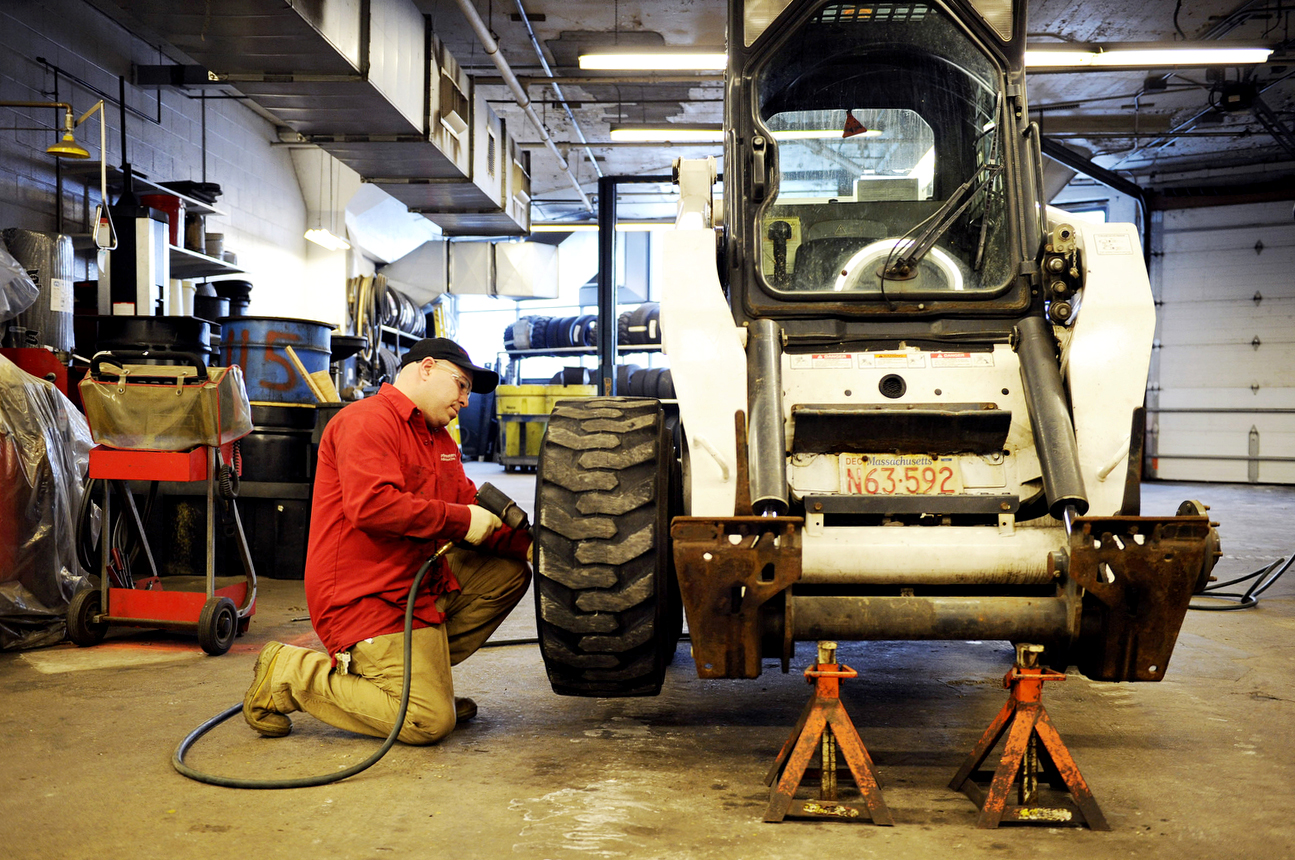
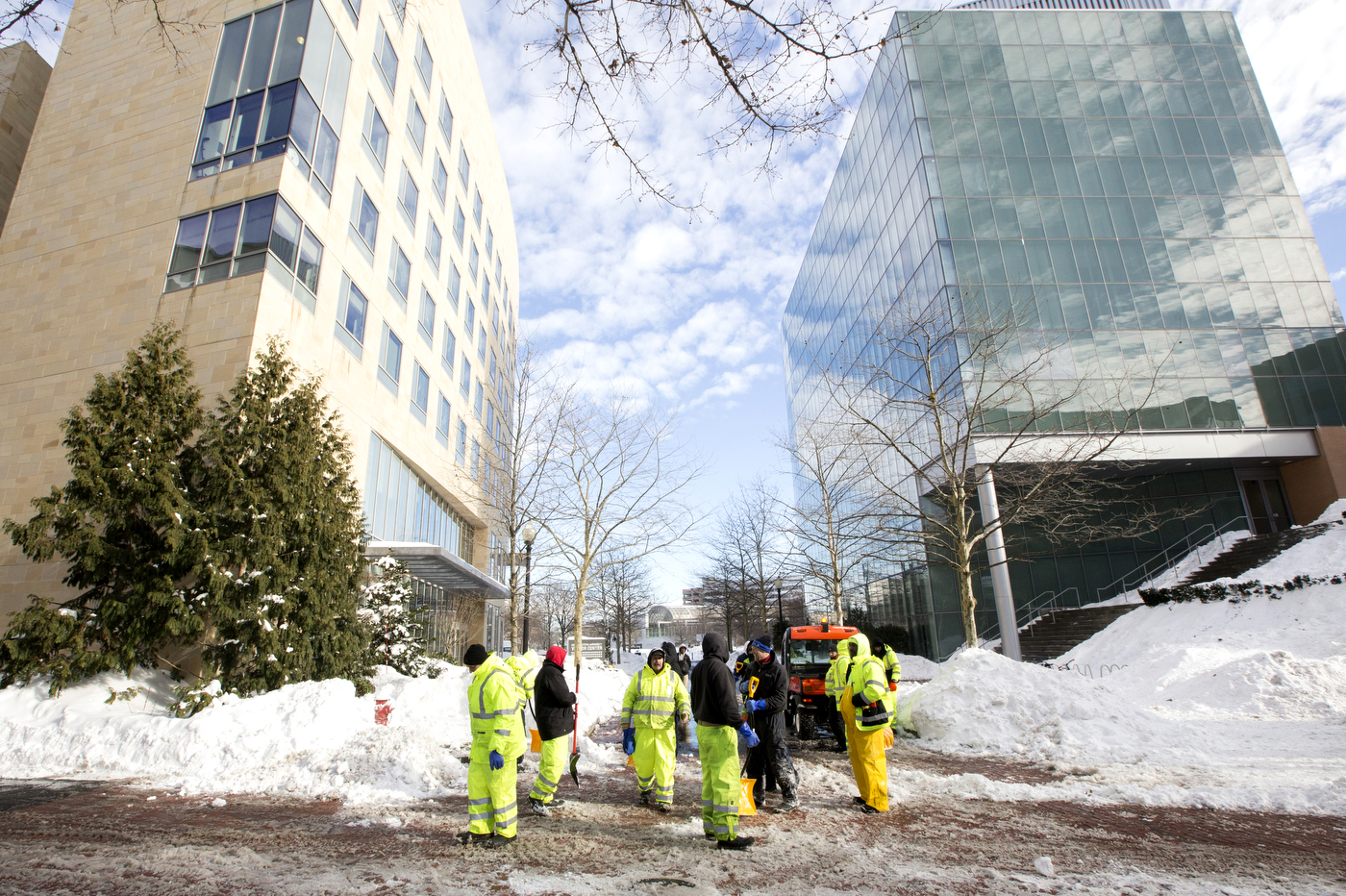

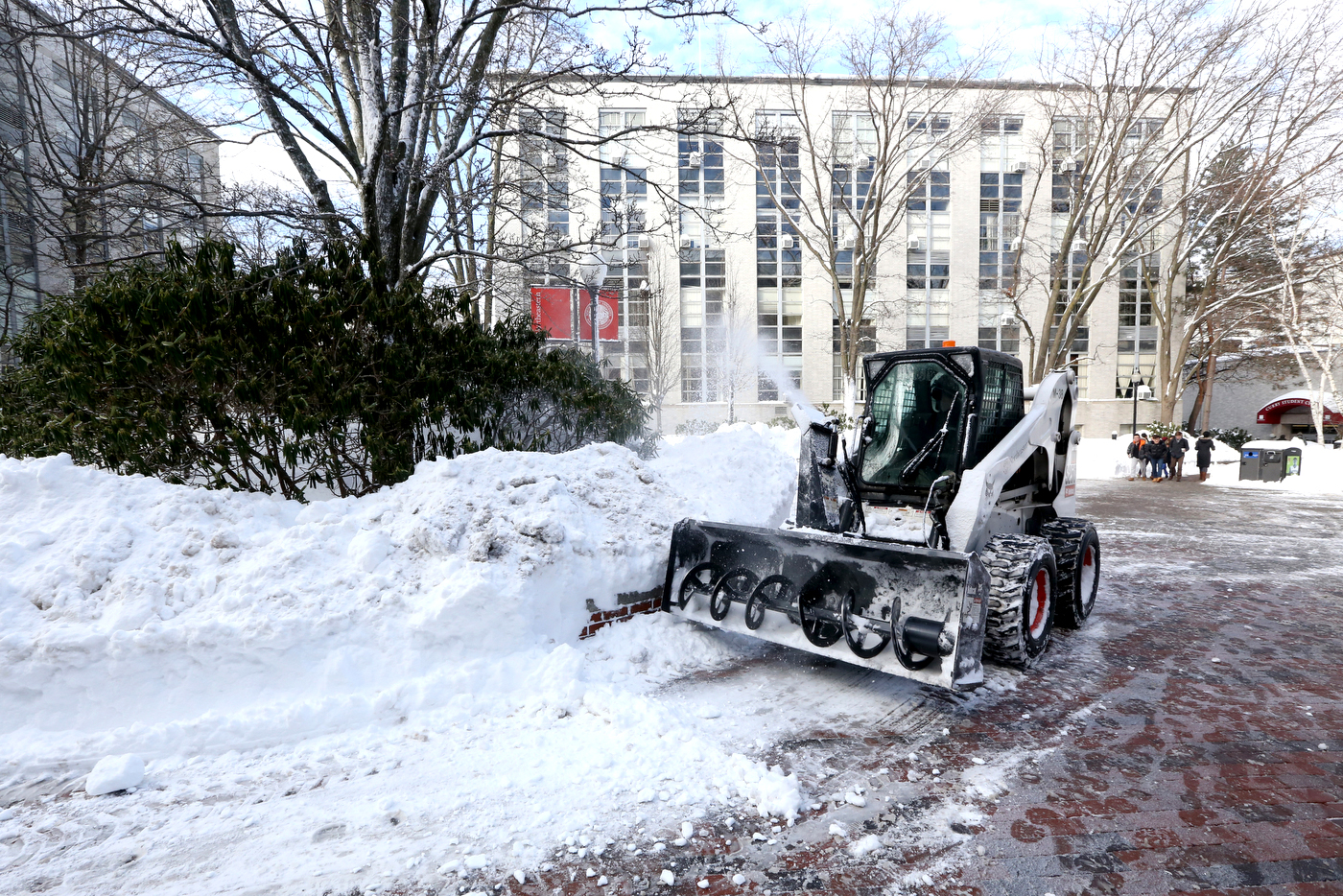
He remembers persuading the administration to shut down school in the mid-1980s, based on a forecast of 18 inches of snow. As he walked outside after the contentious meeting, the clouds cleared and the sun came out.
“I said, ‘We’re going to get fired,’” Boulter says. “Then, a half-hour later, all hell broke loose and we got 20 inches of snow.”
His main job, in the beginning, was to clear the lots that accommodated the 5,000 cars that commuted to Northeastern each day. Now that most of those spaces have been replaced by buildings, the clean-ups have become more demanding. For the new pedestrian bridge that spans the railroad tracks, Boulter has purchased a special plow.
“It has a big brush on it,” he says. “So I’m brushing the snow from the Snell Library side all the way to the Columbus Avenue side. I have to go that way with it because I can’t throw it over the tracks. I think they’d be a little upset at the MBTA if we did that.”
In a corner of Boulter’s basement office, where the cinderblocks are painted the color of three-day-old snow, is the excellence award his staff earned for enabling the university to remain open in 2015 (and pitching in with the City of Boston’s snow removal.)
“We got 120 inches of snow in like six weeks,” Boulter says. “We worked with a company that had a snow melter to melt the snow that we pushed off the top of the Gainsborough and Columbus garages. They were out there for two days melting it.”
This week’s more manageable storm served as a kind of preseason workout for his crews. More demanding times lay ahead this winter.
“These men and women have been doing snow with me for 25 years,” Boulter says. “They lose a lot of sleep, they miss their children’s birthdays, the holidays. They are a very dedicated team.”
For media inquiries, please contact media@northeastern.edu.






